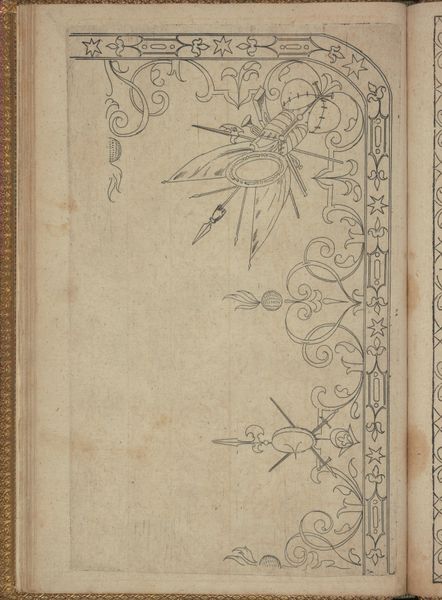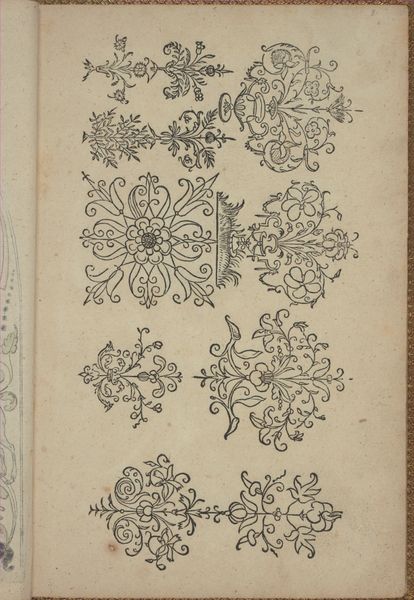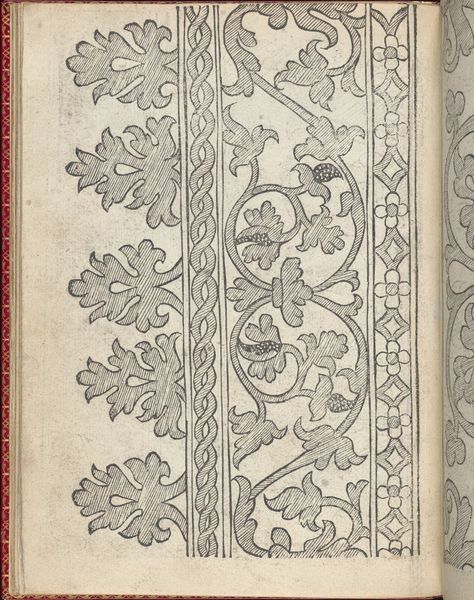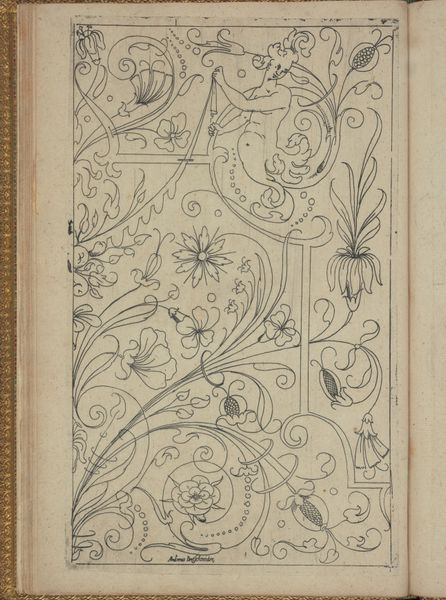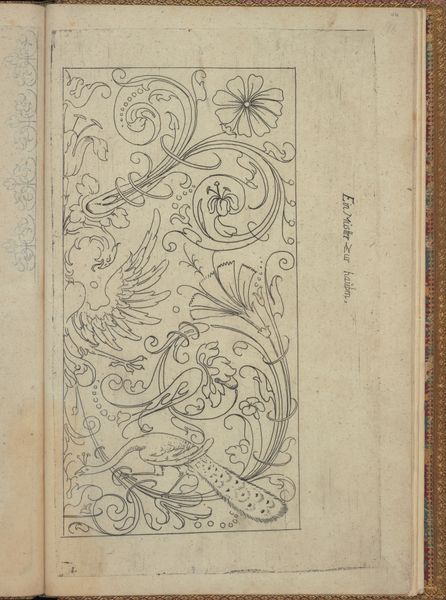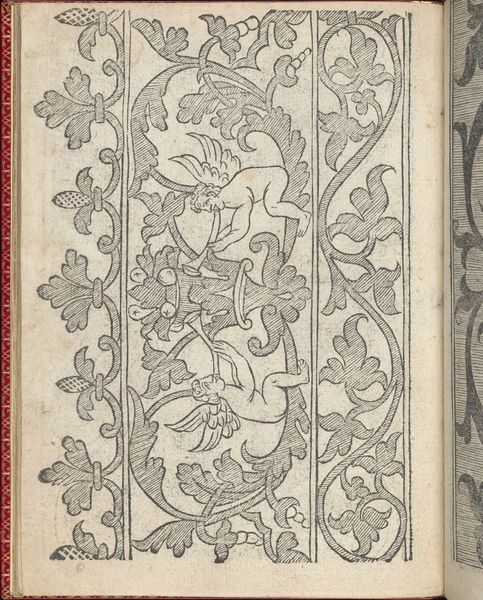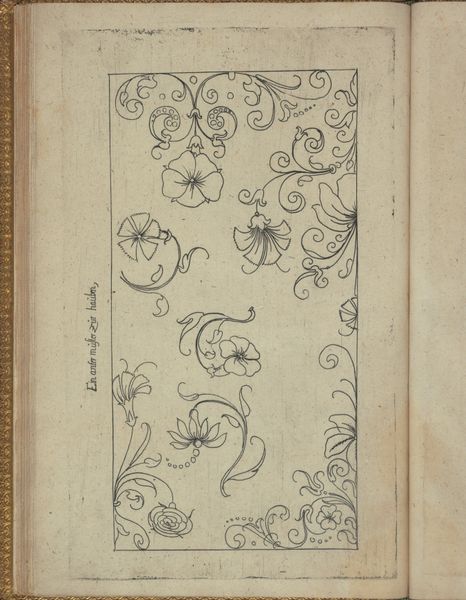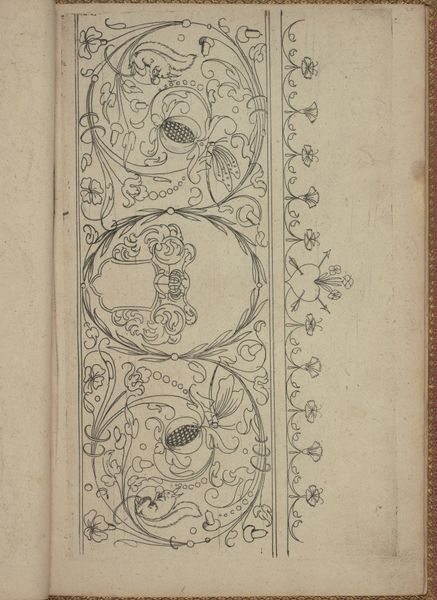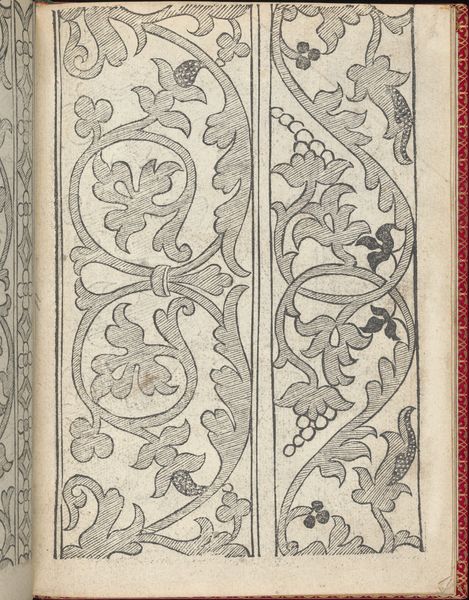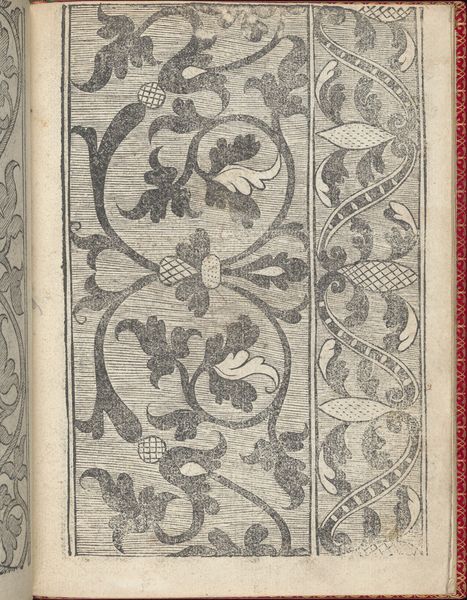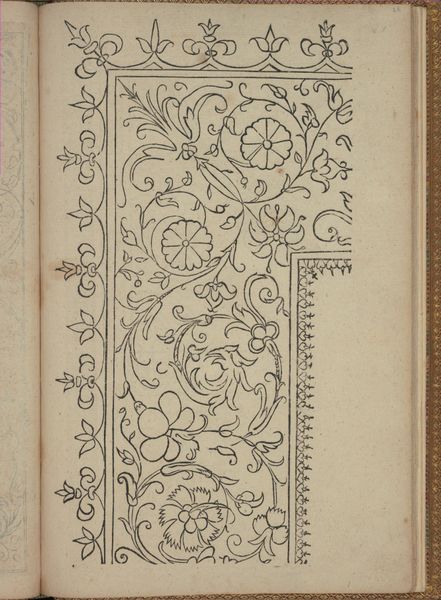
drawing, print, paper, ink
#
drawing
#
aged paper
#
toned paper
#
germany
#
ink paper printed
# print
#
book
#
bird
#
flower
#
vase
#
paper
#
form
#
personal sketchbook
#
ink
#
geometric
#
line
#
sketchbook drawing
#
northern-renaissance
#
watercolor
Dimensions: Overall: 12 x 8 1/16 in. (30.5 x 20.5 cm)
Copyright: Public Domain
Curator: Here we have a page, specifically folio 22 verso, from Andreas Bretschneider's "New Modelbüch," dating back to 1615. Editor: My first thought is how delicately rendered the composition is. It's intricate but feels almost weightless on the page, especially with the visible aging of the paper. Curator: Bretschneider's "Modelbüch" was, essentially, a pattern book for artisans. These pages were meant to serve as templates, influencing designs in textiles, metalwork, and other crafts. These patterns provided the forms to be adopted throughout Northern Renaissance German arts, crafts, and culture. Editor: Absolutely. The linear quality emphasizes the inherent shapes and geometries, a hallmark of the formal vocabulary of the time, while semiotically communicating value and form. It’s like a catalog of visual possibility. Curator: The prominent display of flora and fauna wasn't just for aesthetic purposes. In that era, nature was often coded with symbolism. Birds, for instance, could represent freedom or the soul, depending on the specific species and the broader social narrative of the time and place. The flower images symbolize fertility, hope, and love within the societal structure. Editor: That’s a wonderful point. Structurally, the symmetrical organization is also quite satisfying. The eye is led along a predetermined path, decoding the ornamental program one motif at a time, revealing its structuralist roots in image-making. Curator: Consider, too, who had access to these designs. While Bretschneider's work influenced craftspeople, it also catered to the tastes of the upper classes. It indirectly reflects their values and aspirations, their patronage shaping the artistic landscape. This creates socioeconomic intersectionality. Editor: Looking closely, you can see the precision of the linework, almost etching-like, yet softened by the paper's texture. The contrast really does draw your attention to the individual elements. Curator: Examining "New Modelbüch," through a contemporary lens allows us to consider historical patterns of consumption, production, and class. We are asked to remember those marginalized by this system in our dialogue. Editor: And for me, focusing on form allows for pure, unadulterated aesthetic delight, recognizing an order, in its details, that appeals to innate preferences. Curator: Indeed, looking at the Bretschneider sketch is seeing history—its structures, beliefs, and even the silent stories it carries across the centuries. Editor: The book’s beauty—with its geometric harmony, elegant flora, and restrained application—certainly embodies the period.
Comments
No comments
Be the first to comment and join the conversation on the ultimate creative platform.

